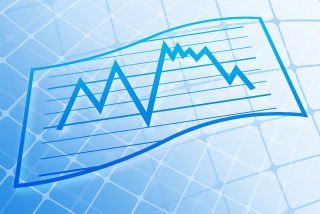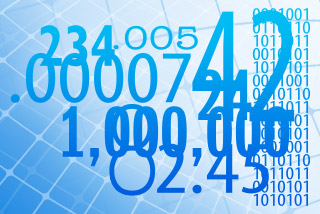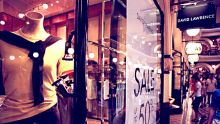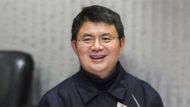- Three way tie for forecaster of the year
- Commodity run is probably done
- 'General glumness' to keep shares flat
- House price will rise, don't expect a crash
The Reserve Bank faces no pressure to adjust interest rates at its first meeting for the year on Tuesday and very little pressure to adjust them at any time during the year as the 2017 BusinessDay Scope forecasting survey predicts a rarity – an entire year of unchanged rates, something that hasn't happened since the survey successfully forecast a year of steady rates in 2014 and before that 2004.
More BusinessDay Videos
Lower growth, less revenue
Leading Australian economists are more pessimistic about the Australian economy than the official Treasury position. Peter Martin explains.
Approaching its 40th year, the exclusive BusinessDay survey is made up of forecasts from 27 leading economists in the diverse fields of financial markets, academia, consultancy and industry. Over time its average predictions have proved to be more accurate than those of any of its individual members.
All of the forecasts are displayed in a table in the print version of BusinessDay and in a click-through interactive graphic on line.
Against a backdrop of sharply climbing commodity prices, an unusual trade surplus and what's expected to be a rebound in US economic growth, the Scope panel predicts Australian economic growth of 2.4 per cent in 2017, a big improvement on the most recent result of 1.8 per cent, but nowhere near as big as the implied forecast of 3 per cent in the treasury's mid-year budget update.
GDP
Only two of the panel expect growth to exceed the federal treasury's 3 per cent forecast: HSBC's Paul Bloxham, who expects 3.4 per cent, and ANZ's Richard Yetsenga, who expects 3.3 per cent. Five are bunched with the treasury at 3 per cent, including Westpac's Bill Evans and the National Australia Bank's Riki Polygenis. But the two who came closest to getting GDP right last year, Stephen Anthony and Bill Mitchell, are far more pessimistic, each predicting only 1.6 per cent.
"Worldwide, the huge expansion in liquidity is pushing up asset prices instead of sparking investment," Anthony says.
"And in Australia mining investment has further to slide.
"That makes us a one-trick pony. We've got high-density dwelling investment driving the economy; potentially unsustainably as a result of effervescence coming in through China and our interest rate settings. That's really the only driver we've got. It will come off at some point in 2017.
"Other than that, consumption is weak, public investment is weak, public consumption is weak, and while net exports are helping, they are driven by Chinese monetary expansion, which will continue for a while before tailing off after 2017. Our growth rate will stay low, between 1 and 2 per cent."
Most of the panel (although not Anthony and the ACTU's Margaret McKenzie) expect a Trump-driven boost in US economic growth to more than 2 per cent. Three of the panel expect growth of 3 per cent. All expect China's reported growth to be close to the official target of 6.5 to 6.7 per cent, in part because of revelations that at least one province has faked data in order to meet the target. Most expect global growth to chug along at around 3.1 per cent.
Trade 
Last year's extraordinary jump in the price of iron ore should run out of steam. After climbing from $US40 a tonne to more than $US80 by December, the panel's central forecast is for a retreat to $US70. But six of the 27 expect further increases, two of them, Mardi Dungey and Neville Norman, to about $US100 a tonne.
The panel's central forecast is for Australia's terms of trade – with the nation running a substantial surplus – to close 2017 little changed, but two of the panel, Sally Auld and Julie Toth, expect further jumps of 7 and 10 per cent, while Michael Blythe and Paul Dales expect sharp falls of 7 and 8 per cent.
The jump in commodity prices has already eliminated Australia's trade deficit and is poised to as-good-as eliminate its current account deficit in the view of the ANZ's Yetsenga, who is forecasting a rounding-error deficit of less than $1 billion in 2017, after $66 billion in 2016. On average the panel expects $46 billion.
Currency 
Most expect a retreat in the Australian dollar from 76 US cents to around 72 US cents. Only one of the panel expects the dollar to move a long way above where it finished 2016, that is Julie Toth of the Australian Industry Group who predicts 95 US cents.
Living standards 
Most of the panel expect the high commodity prices to inject extra cash into the economy, lifting the increase in nominal GDP to 3.7 per cent. The Reserve Bank's favourite measure of living standards, real net disposable income per capita, should climb 1.5 per cent in 2017 after slipping in 2015 and rebounding 1.7 per cent in the year to September. Two of the panel, Dales and Toth, expect mining-boom style growth of 3 and 3.5 per cent.
Prices, wages, jobs 
The panel expects inflation to recover from its disturbingly low 2016 range of 1 to 1.5 per cent, hitting 1.9 per cent by December, which is just below the bottom of the Reserve Bank's 2 to 3 per cent target band. Only two of our forecasters, Saul Eslake and Richard Robinson, expect underlying inflation to climb to anything near the middle of the band, 2.4 per cent for Eslake and 2.3 per cent for Robinson.
Wages should mercifully increase by more than prices, in part because of the extra money high commodity prices will give to employers, climbing 2.1 per cent in 2017 after a record-low 1.9 per cent in 2016. The highest wage growth forecast is 2.7 per cent, from Victoria University economic modeller Janine Dixon. Only one of the forecasts is particularly low. It's for a fall in wages of 0.5 per cent, from Steve Keen, who is also the only forecaster predicting a recession: economic growth throughout the year of minus 1 per cent.
The panel expects the unemployment rate to stay more or less where it is at 5.8 per cent, with only Keen and Toth predicting big increases, to 6.5 per cent.
Budget 
The boost in commodity prices will help the budget, but not yet. Mining companies still have a lot of investment spending to write off their tax bills.
They'll also help to the extent that they boost wages, but that boost isn't expected to be big. The panel is predicting slightly bigger budget deficits than those forecast by the government: $39 billion for 2016-17 and $35 billion for 2017-18
Interest rates 
Money will remain cheap for the government should it decide to shake off its reluctance and borrow big for infrastructure. The panel is predicting a 10-year bond rate of just 2.9 per cent in 2017. Only Paul Dales, Saul Eslake, and Su-Lin Ong predict increases to north of 3.25 per cent. Paul Bloxham expects a dive to 1.9 per cent.
Most expect a steady cash rate throughout the year, with only four predicting an increase. Twelve expect at least one cut, to 1.25 per cent, six expect a further cut to 1 per cent. On average the panel expects a cash rate of 1.4 per cent, which, given that the Reserve Bank only adjusts in increments of 0.25 per cent, means no change at 1.5 per cent.
Investment 
After collapsing 40 per cent in 2016, mining investment should slide by a more gracious 13 per cent in 2017. But the range of forecasts is unusually wide, from a collapse of 30 per cent (Polygenis and Shane Oliver) to a rebound of 10 per cent (Shane Garrett).
Non-mining investment should climb a further 3.5 per cent after climbing 3 per cent last year, but the range of these forecasts is also wide, from a slide of 3 per cent (Dales) to a jump of 10 per cent (Koukoulas).
The range of housing investment forecasts is also wide, with the central forecast of just 1.9 per cent masking forecasts as high as growth of 11 per cent (Norman) and as low as a slide of 5.5 per cent (from the Housing Industry Association itself).
Housing 
Home prices should take a breather, with the CoreLogic measure growing by just 4.9 per cent in Sydney and 4.3 per cent in Melbourne after an extraordinary 15.5 per cent and 13.7 per cent in 2016. Some forecasters expect home prices to fall (Nicki Hutley, Koukoulas and Keen) and two expect no growth (Jakob Madsen, and Richard Robinson from the property specialist BIS Shrapnel). The highest forecasts are for further growth of 12 per cent (Toth and Renee Fry-McKibbin for Sydney and Mardi Dungey for Melbourne).
Share market 
The ASX200 should also take a breather, climbing just 2 per cent from 5627 to 5794 after climbing 6 per cent in 2016. Only Toth and Dungey expect big gains of 7 and 10 per cent, taking the index beyond 6000. Only Anthony and Keen expect falls, of around 10 per cent. Both Anthony and Keen has been forecaster of the year, each more than once.
















3 comments
New User? Sign up